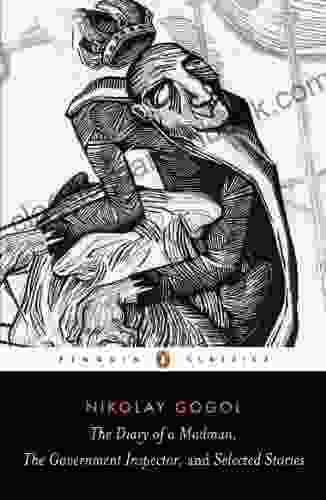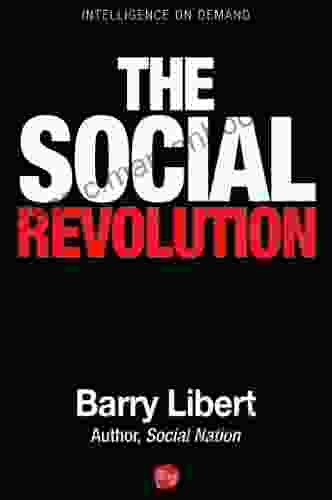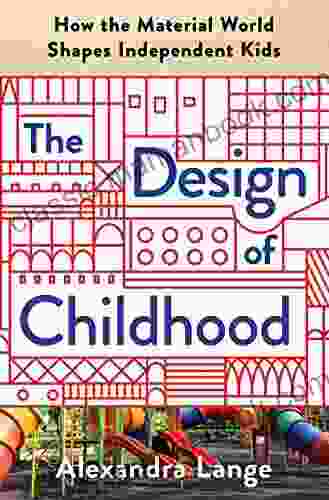How the Material World Shapes Independent Kids: A Comprehensive Exploration


4.4 out of 5
| Language | : | English |
| File size | : | 55332 KB |
| Text-to-Speech | : | Enabled |
| Screen Reader | : | Supported |
| Enhanced typesetting | : | Enabled |
| Word Wise | : | Enabled |
| Print length | : | 411 pages |
| Lending | : | Enabled |
The environment in which children grow up plays a pivotal role in shaping their development. Beyond the nurturing presence of caregivers, the material world—the objects, spaces, and surroundings that children interact with—silently yet profoundly influences their journey towards independence. This article delves into the ways in which the material world impacts children's autonomy, resilience, and problem-solving abilities, ultimately contributing to their overall well-being.
The Unseen Force: Material World and Child Development
The material world around children is not merely a backdrop but an active participant in their development. From the toys they play with to the spaces they inhabit, every element holds the potential to either nurture or hinder their growth towards independence. By understanding how these elements interact with children, we can create environments that foster their autonomy, resilience, and problem-solving abilities.
1. Autonomy: Empowering Children Through Independent Play
Children's interactions with the material world provide them with opportunities to experiment, explore, and make choices. Unstructured play, particularly in outdoor environments, allows children to develop a sense of agency and control over their surroundings. By choosing what to play with, where to play, and how to play, they learn to navigate their world with increasing confidence and independence.
2. Resilience: Building Strength Through Challenges
The material world can also present children with challenges that help them build resilience. Obstacles such as uneven terrain, inclement weather, or complex toys require children to adapt, persevere, and find creative solutions. Overcoming these challenges fosters a sense of accomplishment and boosts their confidence in their ability to handle future obstacles.
3. Problem-Solving: Nurturing Critical Thinking Skills
The material world is a constant source of problems for children to solve. Whether it's figuring out how to open a toy box or build a tower with blocks, children engage in problem-solving activities that develop their critical thinking skills. By manipulating objects, testing hypotheses, and finding solutions, they learn to think independently and approach challenges with creativity and resourcefulness.
Practical Tips for Creating an Environment for Independent Kids
Recognizing the importance of the material world in shaping children's independence, here are some practical tips for creating environments that foster their growth:
- Provide opportunities for unstructured play: Allow children to engage in play that is not directed by adults. Encourage them to explore their surroundings, use their imaginations, and make their own choices.
- Incorporate nature into daily life: Spend time outdoors with children, allowing them to interact with natural elements such as plants, rocks, and water. Nature provides a rich sensory and physical environment that promotes independence and exploration.
- Choose toys that encourage problem-solving: Select toys that require children to think critically and find creative solutions. Avoid toys that are overly prescriptive or limit their imagination.
- Create spaces for physical activity: Provide children with spaces where they can run, climb, jump, and engage in other forms of physical activity. Physical activity helps develop coordination, balance, and spatial awareness, all of which contribute to independence.
- Foster social interaction: Encourage children to interact with other children in a safe and supervised environment. Social interaction helps children learn to cooperate, communicate, and resolve conflicts independently.
The material world is an unseen but powerful force in shaping children's development towards independence. By understanding how the environment around them influences their autonomy, resilience, and problem-solving abilities, we can create environments that support their growth into confident and self-reliant individuals. As we continue to explore the intricate connections between the material world and child development, we unlock the potential to empower children with the skills they need to thrive in an ever-changing world.
4.4 out of 5
| Language | : | English |
| File size | : | 55332 KB |
| Text-to-Speech | : | Enabled |
| Screen Reader | : | Supported |
| Enhanced typesetting | : | Enabled |
| Word Wise | : | Enabled |
| Print length | : | 411 pages |
| Lending | : | Enabled |
Do you want to contribute by writing guest posts on this blog?
Please contact us and send us a resume of previous articles that you have written.
 Top Book
Top Book Novel
Novel Fiction
Fiction Nonfiction
Nonfiction Literature
Literature Paperback
Paperback Hardcover
Hardcover E-book
E-book Audiobook
Audiobook Bestseller
Bestseller Classic
Classic Mystery
Mystery Thriller
Thriller Romance
Romance Fantasy
Fantasy Science Fiction
Science Fiction Biography
Biography Memoir
Memoir Autobiography
Autobiography Poetry
Poetry Drama
Drama Historical Fiction
Historical Fiction Self-help
Self-help Young Adult
Young Adult Childrens Books
Childrens Books Graphic Novel
Graphic Novel Anthology
Anthology Series
Series Encyclopedia
Encyclopedia Reference
Reference Guidebook
Guidebook Textbook
Textbook Workbook
Workbook Journal
Journal Diary
Diary Manuscript
Manuscript Folio
Folio Pulp Fiction
Pulp Fiction Short Stories
Short Stories Fairy Tales
Fairy Tales Fables
Fables Mythology
Mythology Philosophy
Philosophy Religion
Religion Spirituality
Spirituality Essays
Essays Critique
Critique Commentary
Commentary Glossary
Glossary Bibliography
Bibliography Index
Index Table of Contents
Table of Contents Preface
Preface Introduction
Introduction Foreword
Foreword Afterword
Afterword Appendices
Appendices Annotations
Annotations Footnotes
Footnotes Epilogue
Epilogue Prologue
Prologue Dalai Lama
Dalai Lama Geoffrey C Fuller
Geoffrey C Fuller Rudolf Mauz
Rudolf Mauz Michael Heise
Michael Heise Hannah Sutherland
Hannah Sutherland Jp Roth
Jp Roth Kate Washington
Kate Washington Don Shiach
Don Shiach Pranada Comtois
Pranada Comtois Carmella Van Vleet
Carmella Van Vleet K M Rought
K M Rought Carline Crevecoeur
Carline Crevecoeur Jonathan Law
Jonathan Law Arthur Brooke
Arthur Brooke Janaka Stucky
Janaka Stucky M Ruth Myers
M Ruth Myers Morgan Housel
Morgan Housel Susan Lang
Susan Lang Michael G Kelly
Michael G Kelly Olena Rose
Olena Rose
Light bulbAdvertise smarter! Our strategic ad space ensures maximum exposure. Reserve your spot today!

 Gabriel BlairNikolai Gogol's Literary Masterpieces: "Diary of a Madman," "The Government...
Gabriel BlairNikolai Gogol's Literary Masterpieces: "Diary of a Madman," "The Government...
 Stephen FosterMy Dark Horses Pavilion Poetry: A Poetic Exploration of the Unconscious Mind
Stephen FosterMy Dark Horses Pavilion Poetry: A Poetic Exploration of the Unconscious Mind
 William ShakespeareHaikyuu!! Vol. 13: Playground by Haruichi Furudate: A Spirited Tournament and...
William ShakespeareHaikyuu!! Vol. 13: Playground by Haruichi Furudate: A Spirited Tournament and... Larry ReedFollow ·3.8k
Larry ReedFollow ·3.8k Alex ReedFollow ·7.9k
Alex ReedFollow ·7.9k Gerald BellFollow ·6k
Gerald BellFollow ·6k Al FosterFollow ·12.4k
Al FosterFollow ·12.4k Devon MitchellFollow ·12.6k
Devon MitchellFollow ·12.6k Benji PowellFollow ·10.4k
Benji PowellFollow ·10.4k Felix HayesFollow ·15.3k
Felix HayesFollow ·15.3k Osamu DazaiFollow ·4.8k
Osamu DazaiFollow ·4.8k

 Bryan Gray
Bryan GrayCello Alternativo: Exploring Contemporary Pizzicato...
: Embracing the Avant-Garde Within...

 Victor Hugo
Victor HugoThe Social Revolution: Barry Libert's Vision for a More...
In a world where...

 Tony Carter
Tony CarterA Comprehensive Guide to Crafting Clear and Effective Job...
A job description is a critical tool...

 Deacon Bell
Deacon BellSelected Poems And Prose Lorenzo Da Ponte Italian Library
Lorenzo Da Ponte, born...

 Francisco Cox
Francisco CoxWhat You Need To Know About Opportunity Cost: A...
Opportunity cost is a fundamental concept...

 Bill Grant
Bill GrantWhy Our Kids With Behavioral Challenges Are Falling...
Every year,...
4.4 out of 5
| Language | : | English |
| File size | : | 55332 KB |
| Text-to-Speech | : | Enabled |
| Screen Reader | : | Supported |
| Enhanced typesetting | : | Enabled |
| Word Wise | : | Enabled |
| Print length | : | 411 pages |
| Lending | : | Enabled |






